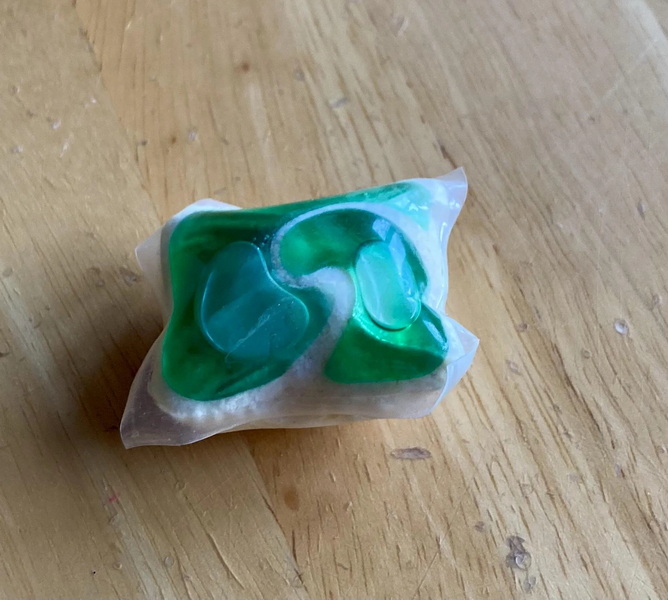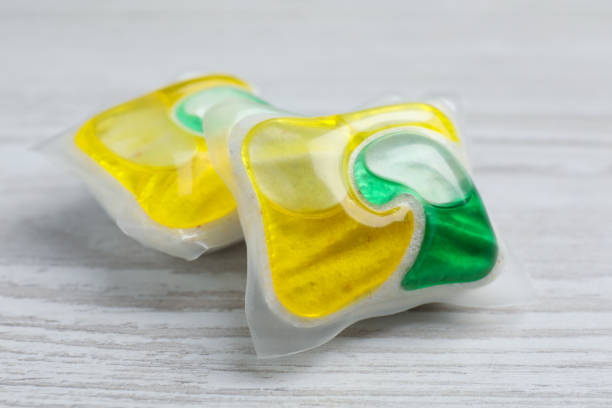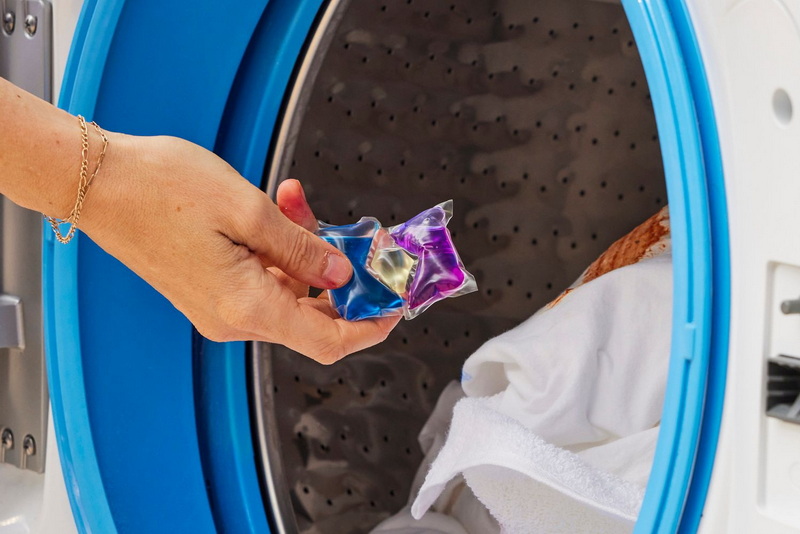Dongguan UFine Daily Chemical Co.,Ltd.
- All
- Product Name
- Product Keyword
- Product Model
- Product Summary
- Product Description
- Multi Field Search
Views: 222 Author: Tomorrow Publish Time: 11-04-2025 Origin: Site











Content Menu
● How to Identify By Packaging
● Understanding Ingredients and Functions
● Label Reading and Verification
● How to Safely Compare Products
● Practical Tips for Household Use
● Extended Discussion on Formulation Safety and Environmental Considerations
● Handling Accidents and spills
● FAQ
>> 1. What is the primary difference between laundry pods and dishwasher pods in terms of use?
>> 2. Can using the wrong type of pod damage a machine or leave residue on laundry or dishes?
>> 4. How should pods be stored to minimize confusion and safety risks?
>> 5. Where can consumers reliably verify the intended use and ingredients listed on pod packaging?
In households today, pod technologies have become ubiquitous for cleaning and laundry routines. However, the rapid adoption of pods has led to a confusing landscape where laundry pods and dishwasher pods look similar, share compact packaging, and sometimes use comparable visuals. This article explains how to distinguish laundry pods from dishwasher pods, considering safety, formulation, usage, and labeling. The goal is to help consumers avoid mistakes, minimize accidental ingestion, and use products as intended.

Laundry pods and dishwasher pods are both single-dose cleaning products designed for convenience. They typically come in water-soluble pouches made of polyvinyl alcohol (PVA) film. The key differences lie in their active ingredients, recommended usage, and the environments they are designed for.
- Visual cues: Both types often use bright colors and bold branding. Look for product category terms on the package, such as “Laundry,” “Dishwasher,” or “Detergent.”
- Labels and icons: Laundry pods usually display washing symbols, fabric care instructions, or statements like "For use in washers." Dishwasher pods typically show dishwasher-specific icons, water hardness guidance, and cycles such as “Auto,” “Heavy Duty,” or “Eco 50°C.”
- Safety warnings: Laundry pods frequently include warnings about keeping out of reach of children and pets, while dishwasher pods emphasize avoiding contact with skin and eyes.
- Size and shape: Pod dimensions are similar across categories, so do not rely solely on size to determine usage.
- Laundry pods: Primary active ingredients often include anionic and nonionic surfactants, enzymes for stain removal, optical brighteners, and sometimes bleaching agents. The pH is balanced for fabrics and skin safety. They are designed to clean fabrics, remove dirt, and reduce odors in textiles.
- Dishwasher pods: Active ingredients focus on removing food soils, grease, and mineral deposits. Common components include surfactants, enzymes (in some formulations), alkaline builders, anti-scale additives, and rinse aids. They target dishware surfaces and glassware, not textiles.
- Laundry pods: Used in washing machines, both standard and high-efficiency (HE) models. They are placed directly in the drum or detergent compartment, depending on the product instructions. They are formulated to break down in water and release cleaning agents during the wash cycle.
- Dishwasher pods: Used in dishwashers, placed in the detergent dispenser or directly in the dispensing chamber, depending on the model. They dissolve during the wash and rinse cycles to remove food residues and residue from dishes.
- Ingestion risk: Pods are highly concentrated and can be dangerous if swallowed, particularly for children and pets. Both types should be kept out of reach and stored in their original containers with intact child-resistant features where applicable.
- Eye and skin contact: Contact with eyes or skin can cause irritation. Wash with plenty of water if contact occurs and seek medical advice if symptoms persist.
- Storage: Store in a cool, dry place away from heat sources and direct sunlight. Do not transfer to non-original containers that could cause confusion.
- Read the product label carefully for usage instructions, dosage, and warnings.
- Check the ingredient list if you have sensitivity or allergies to certain detergents or enzymes.
- Look for standardized markings and certifications relevant to your region (for example, energy efficiency labels for appliances may appear on packaging in some markets).

- Create a quick comparison table in your notes:
- Category: Laundry vs. Dishwasher
- Intended use: Fabric cleansing vs. Dishware cleaning
- Typical ingredients: Surfactants and enzymes vs. Alkaline builders and rinse aids
- Recommended environment: Washing machines vs. Dishwashers
- Label cues: Icons and cycle references for each category
- Verify the product's intended use on the label before purchase or use.
- If you are unsure, contact the manufacturer's customer service with the product code and batch number.
- Misconception: All pods with “detergent” in the name are interchangeable. Reality: Detergent formulations differ for fabric care and dishcare. Using a laundry pod in a dishwasher, or vice versa, can cause poor cleaning results and potential safety hazards.
- Misconception: Pods are safe for all surfaces. Reality: Some products are optimized for specific materials or cycles; using the wrong pod may damage dishes, textiles, or surfaces.
- Keep a dedicated storage area for each pod type to minimize mix-ups.
- Teach household members, especially children, about pod safety and the importance of using them only as directed.
- When in doubt, use the measuring guidance provided on the package or switch to traditional liquid or powder forms if you prefer clearer dosage cues.
- Regularly check for any product recalls or safety warnings issued by regulatory bodies or manufacturers.
- Environmental impact: Both laundry and dishwasher pods contribute to the household cleaning footprint. Look for products with biodegradable surfactants and responsible packaging. Some brands offer concentrated formulas to reduce plastic and water usage, and others provide refillable options.
- Enzymes and sensitivity: Enzymatic formulations can cause skin or respiratory irritation for sensitive individuals. If you have sensitive skin, choose hypoallergenic or enzyme-free variants and always follow label directions.
- Fragrances and dyes: Fragrances can trigger allergies or asthma in some people. If you are fragrance-sensitive, seek fragrance-free or low-allergen options.
- Packaging waste: Pouches and outer cartons contribute to waste. Consider brands that use recyclable packaging or offer take-back programs.
- Immediate actions: If a pod leaks, wipe the area with clean towels and ventilate the room. Avoid contact with skin and eyes.
- For skin exposure: Rinse with plenty of water for several minutes. If irritation persists, seek medical advice.
- For ingestion: If a pod is swallowed, do not induce vomiting unless instructed by medical professionals. Contact poison control or emergency services immediately.
- Child safety: Keep out of reach, use child-resistant packaging, and supervise children during cleaning tasks.
- Create a labeled storage system: one bin for laundry pods and another for dishwasher pods, with clear, durable labels.
- Use a reminder system: place a small note on the appliance door reminding household members which pod type goes where.
- Audit regularly: every few months, verify inventory, check packaging for damage, and confirm that labels are legible.
Distinguishing laundry pods from dishwasher pods hinges on reading the label, understanding the intended use, and recognizing the typical ingredients and guidance shown on packaging. By verifying product category, consulting usage instructions, and following safety precautions, consumers can avoid improper usage and ensure effective cleaning while maintaining safety in the home.

Laundry pods are formulated for fabrics and washing machines, while dishwasher pods are designed for dishware and dishwashers. Their active ingredients, pH balance, and guidance on labeling reflect these distinct applications.
Yes. Using a laundry pod in a dishwasher or a dishwasher pod in a washing machine can lead to poor cleaning results, excessive suds, and potential damage to fabrics, glassware, or mechanical components. It can also create residue on dishes or textiles.
Store pods in their original containers, use child-resistant packaging when available, keep them out of reach and sight of children, and educate all household members about pod safety. Supervising young children during cleaning tasks and promptly addressing any spills are important.
Keep laundry and dishwasher pods in separate, clearly labeled storage areas. Use closed cabinets or bins, maintain dry, cool conditions away from heat and moisture, and avoid transferring pods to non-original containers that could cause misidentification.
Always check the product label on the packaging, including the usage instructions, warning notices, ingredient lists, and any certifications or regional compliance marks. If in doubt, contact the manufacturer’s customer service with the product code and batch number.